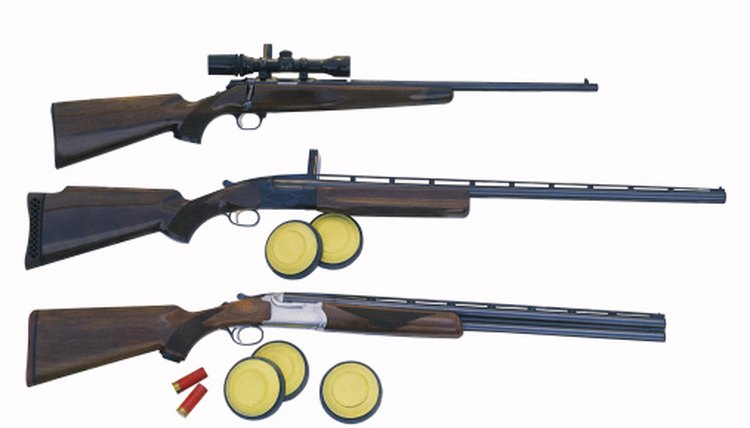Composition of Clay Pigeons

Clay pigeons are manufactured targets used for aerial target practice and competition by shotgunners around the world. Skeet and trap are the two most popular organized competitions in clay target shooting. The goal is to shoot the target as it flies overhead, breaking the clay pigeon into pieces. Pigeons are brittle but fragile, so that they can be broken if struck by even a small number of shotgun pellets. Several manufacturers produce these disk-like targets. Newer producers have altered the ingredients and composition of clay pigeons to make them more environmentally friendly.
Traditional Pigeons
Most clay pigeon targets consist of petroleum-based hot pitch and milled limestone. These two ingredients are hot-molded together. Limestone makes up 60 to 80 percent of the target; the remainder is pitch.
Nontoxic Pigeons
Newer pigeon designs are made from nontoxic ingredients including plaster, calcium bicarbonate, fly ash and heavy spar. These are not biodegradable, but they are not as harmful to the environment as traditional clay pigeon designs.
Biodegradable Pigeons
Patents for biodegradable “clay” pigeons include simple, edible ingredients, such as sugar, birdseed and water. Grain is a possible substitute for birdseed.
Performance
Composition of clay pigeons must be firm enough for the targets to remain intact when they are shipped, stored, loaded and thrown into the air. The targets, however, must also be fragile enough to break when they are struck by a small number of pellets from a shotgun blast.
References
Writer Bio
Jacob Buckenmeyer began writing professionally in 2005. His work has been published in "The Western Front," "Klipsun" magazine, "The Planet" magazine, "Catholic News Service" and various other websites and newspapers. Buckenmeyer has a Bachelor of Arts in journalism from Western Washington University.
